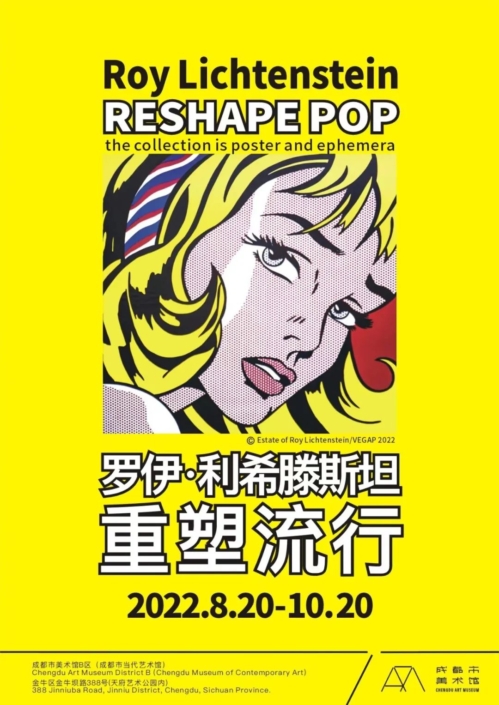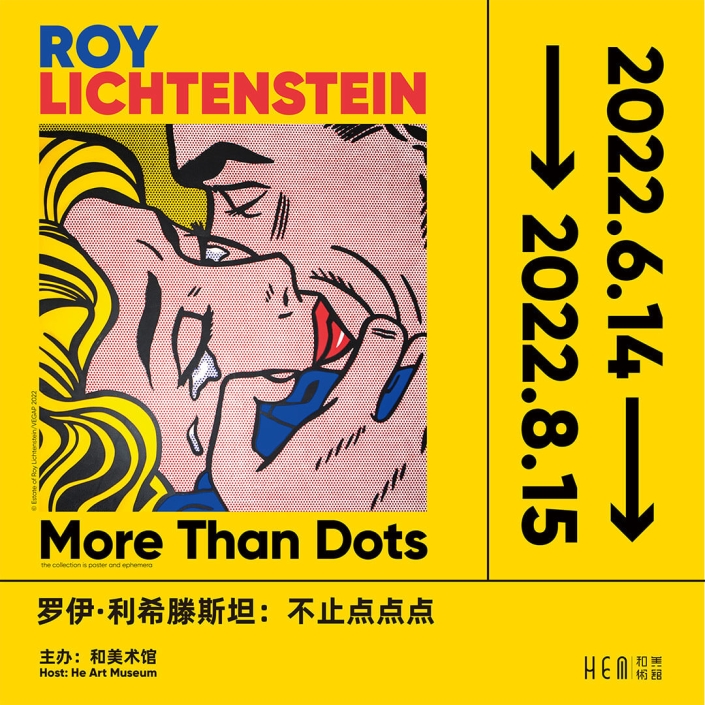ROY LICHTENSTEIN
RESHAPE POP
DESCRIPTION
After the instagrammable spaces at the Seoul Forest Arts Center in Galleria Foret (G205, 32-14, Seoulsup 2-gil, Seongdong-gu, Seoul), now you can view 130 pieces of Roy Lichtenstein’s works in China at the He Art Museum!
Roy Lichtenstein (New York 1923-1997) is one of the central figures of American Pop Art – the creator of his own visual language drawn from comic culture.
His youthful interests included radio programmes like Flash Gordon and Mandrake the Magician, as well as jazz, which led him to start a music group during his years as a boarder at the Franklin School. Lichtenstein studied Fine Arts at Ohio University, graduating in 1946.
For a short time at the end of the 1950s, the artist leaned towards abstract Expressionism. He tried to make his way in this movement but had little success and only managed to survive by also working as a teacher. Little of his work from this period survives, as he destroyed most of it. This exhibition shows two of his final woodcuts from that decade, both made for Polemic, a magazine devoted to contemporary culture and humanities published by the student council of Adalbert College, Western Reserve University in Ohio. As its name indicates, it had a taste for controversy and this spirit of debate attracted intellectuals and artists like Lichtenstein. He worked for it on two occasions: Untitled (vol. 2, no. 1, 1957) and Polemic (cover for vol. 6, no. 1, 1959).
After this brief involvement in Expressionism and a period of experimentation with Constructivism, in the early 1960s, he decided to break with these precepts and began looking towards everyday life, in a cultural environment dominated by a consumer society.
From then on, his work was characterised by its appropriation of images from the field of illustration and advertising, as he entirely abandoned expressive language to adapt the look and feel of the comic strip to the canvas. It was then that he established his recognisable visual vocabulary, resulting from a combination of several elements: a palette reduced to white, black and a range of primary colours; figures outlined with a thick black line; and areas of dots to imitate the patterns used in graphic prints, known as Ben-Day dots. When he first worked with this technique, he made the dots using holes in aluminium plates, but he later perfected his method by acquiring Ben-Day plates, used in the graphic arts, which allowed him to create much more uniform patterns. His work also incorporated onomatopoeia and text bubbles – a clear allusion to the look and feel of comics.
Behind these apparently superficial of his creations, he concealed a deep conceptual approach to the role of artists and their creations in the post-industrial world.
The early 1960s mark the beginning of Pop Art in Lichtenstein’s work. It was when he began to work with the motifs, style and repertoire that accompanied him for the rest of his life.
First stage – Roy Lichtenstein – The Scent Of Teras
Second stage – Roy Lichtenstein – More Than Dots
Third international stage (second in China) – Roy Lichtenstein – Reshape Pop
STAGES
KOREA. Seoul, Forest Art Center. 3 Dicember 2021 – 3 April 2022
CHINA. Foshan, He Art Museum. 14 June 2022 – 15 August 2022
CHINA. Chengdu, Museum of Contemporary Art. 20 August – 20 October 2022




